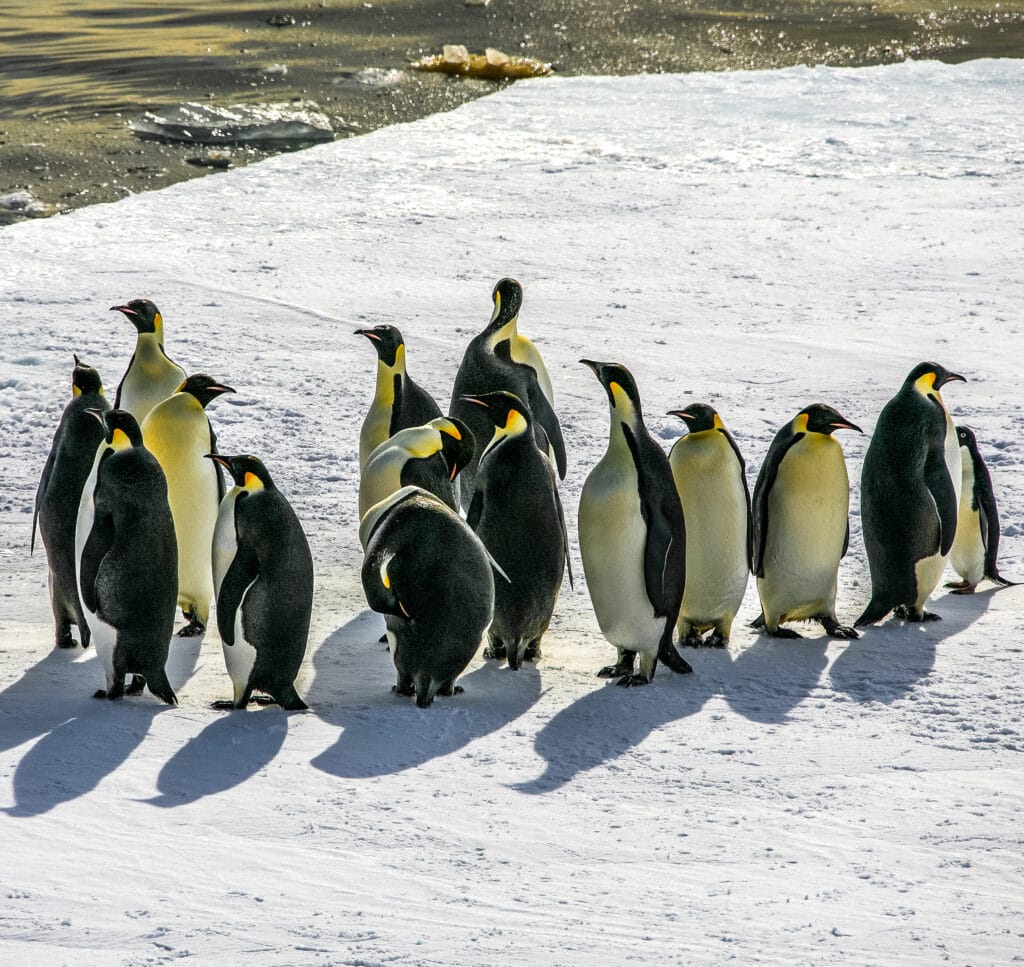The melting of the ice caps has long been a major talking point for conversations about global warming, climate change, and humanity’s role in earth’s changing ecology. The wildlife of the cold Antarctic regions are often at the forefront of these conversations, as are changes in sea levels and the ripples of these changes that are felt throughout the earth’s oceans.
Related Article: New Zealand’s Favorite Bird Finally Returns to the Mainland
Now, recent findings may indicate that this situation is becoming more dire for one of our planet’s largest birds. The Emperor Penguin is an impressive and unusual bird. Standing at roughly four feet tall, these ice-dwelling birds are adapted for fishing rather than flying. Their bulk allows them to keep warm and their body shape, flightless wings, and small feathers all allow them to dive in freezing Antarctic waters in search of fish.
Like many other seabirds, Emperor Penguins nest in large colonies. Because of the remote and unforgiving locale, many of these enormous colonies are still being discovered. Few humans ever venture to Antarctica, so Emperor Penguin colonies are identified and monitored via satellite thanks to the fact that the brown guano left behind by breeding colonies is easily visible from great distances against the white expanses of ice and snow that make up the Antarctic landscape.
As of January of 2023, the British Antarctic Survey reports a total of 66 Emperor Penguin colonies, all of which rely on sea ice for breeding. Platforms of floating ice, sometimes referred to as “fast ice,” attached firmly to land or ice shelves are the preferred breeding ground for Emperor Penguins. But with sea ice diminishing, Emperor Penguin colonies face a future that is fraught and uncertain.
A recent report from the British Antarctic Survey demonstrates the precariousness of this situation. According to the organization, the central and eastern Bellingshausen Sea regions of Antarctic coast experienced a 100% loss of sea ice beginning in December of 2022. This occurred during a period of the Emperor Penguin breeding season that would have seen hatched chicks not yet old enough to leave the colony or survive the melting or collapsing of the colony’s fast ice due to a lack of developed waterproof feathers.
It is believed that, due to this catastrophic loss of sea ice, four out of the five colonies in the affected region have experienced a total or near-total breeding failure. This is unprecedented and may have resulted in as many as 9,000 chicks lost to the cold Antarctic Sea.
Events like this one demonstrate the profound affect that climate can have on bird populations. Emperor Penguins are unique in that human development does not physically encroach on their habitats. They are not hunted, they are not threatened by invasive species. Climate is the only major ecological danger facing these birds, and it is dire enough to cost them an entire breeding season.
Popular Article: After a Rare Woodpecker Reappeared, Conservationists Bought its Habitat

